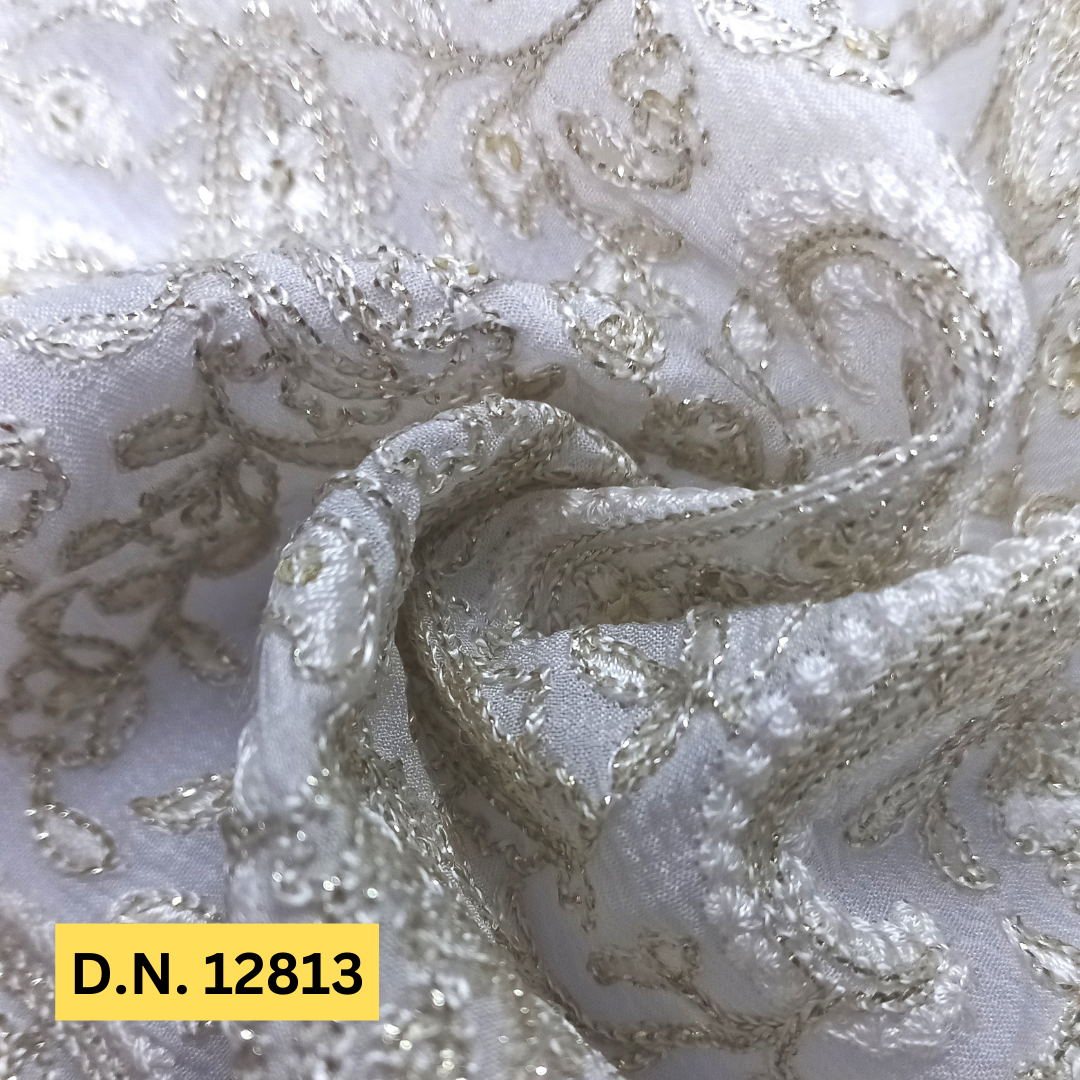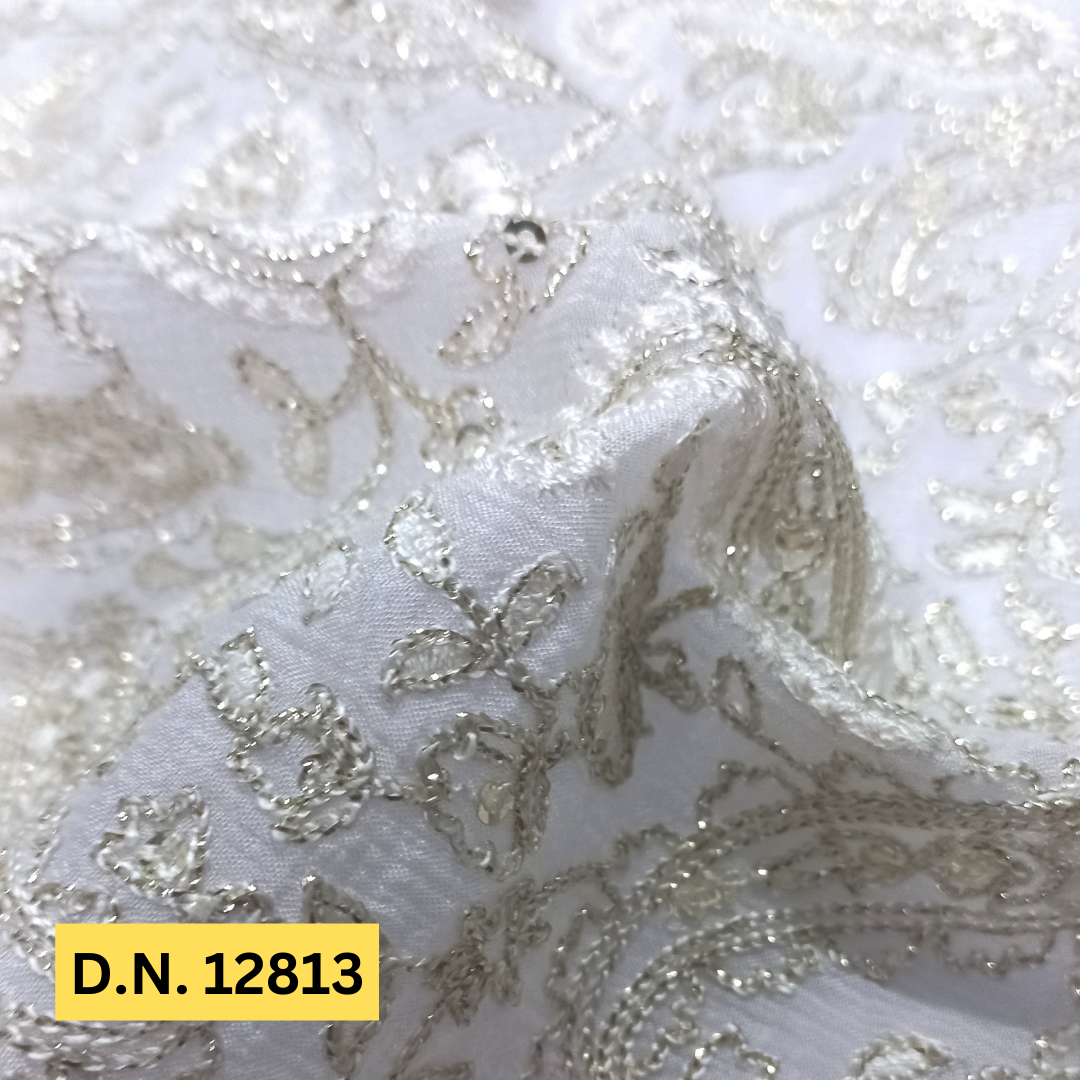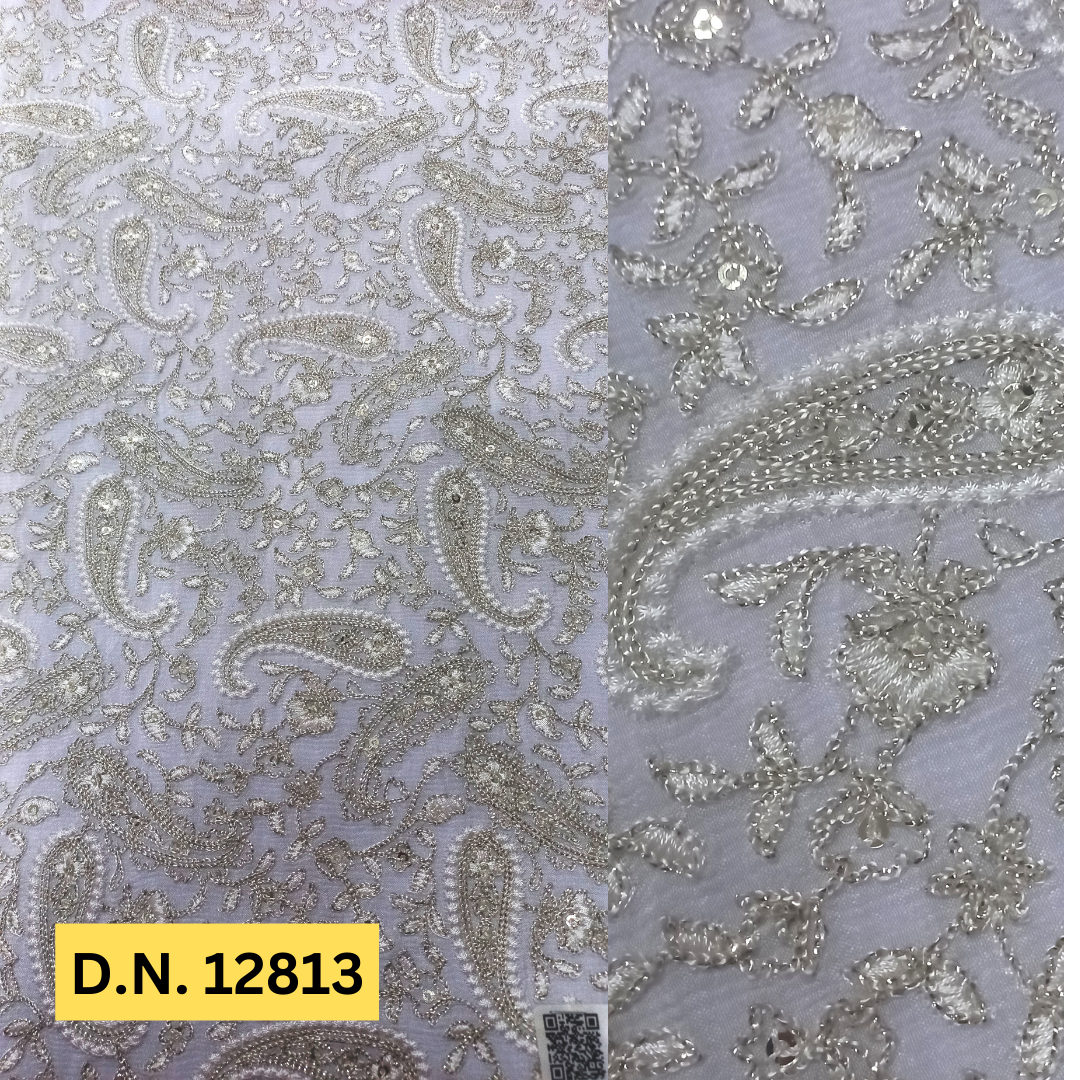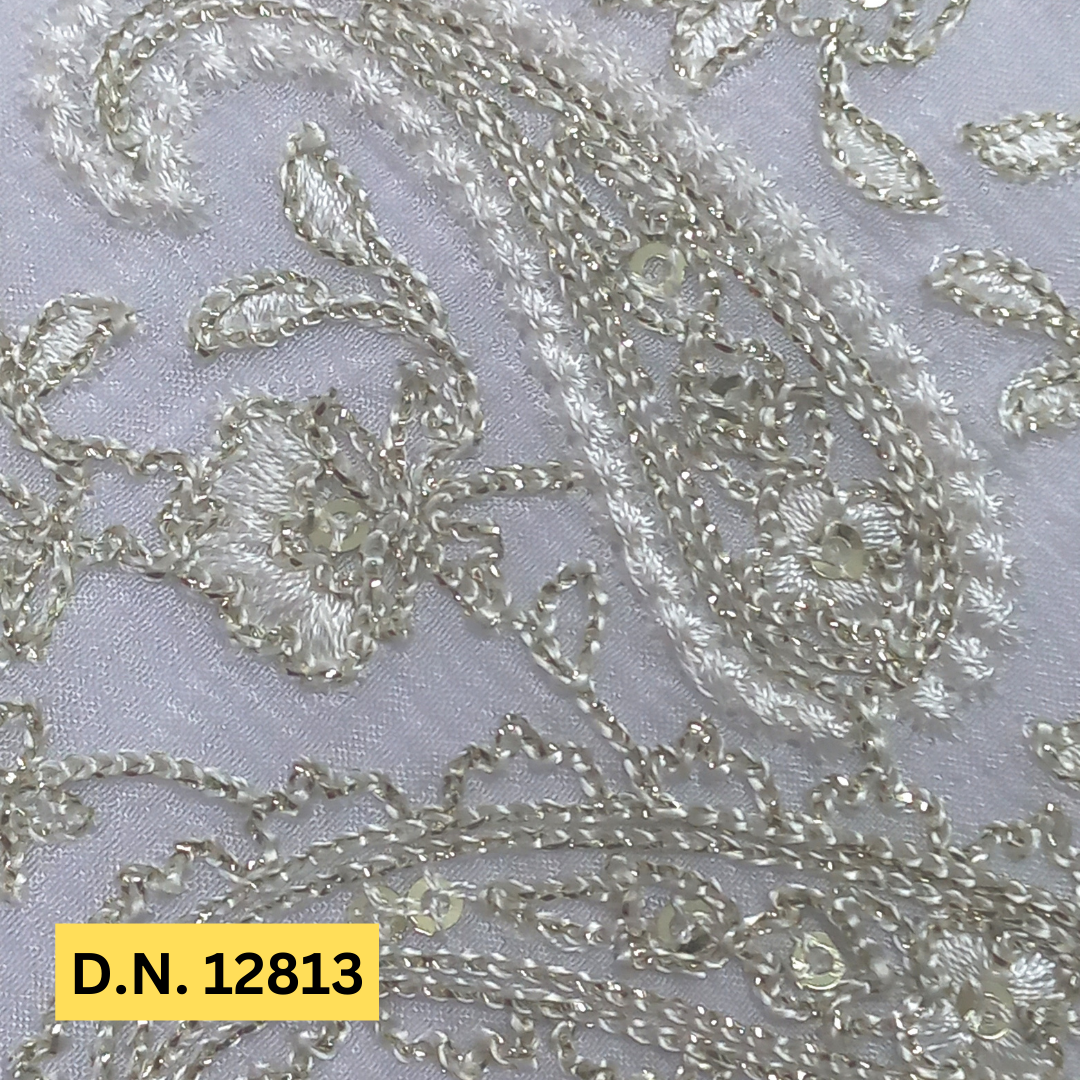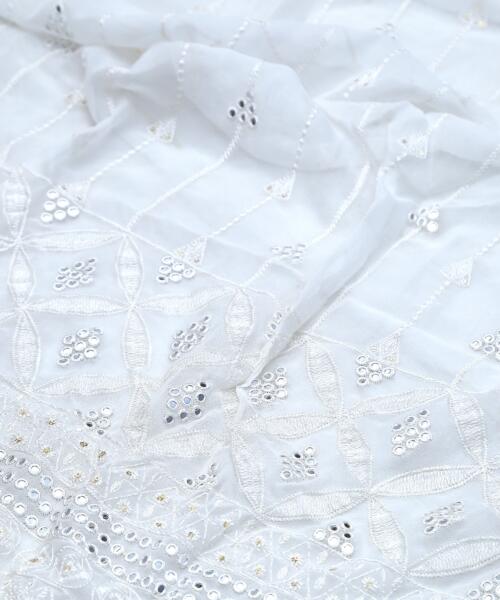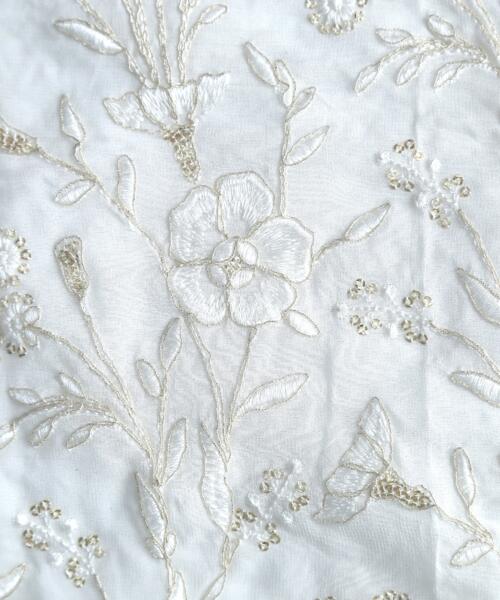Description
Are you on the hunt for exquisite traditional design embroidery fabric to elevate your next ethnic garment creation? Look no further! This beautiful fabric is perfect for crafting a variety of stunning heavy women’s garments, ensuring you stand out at any occasion.
Shop Premium Traditional Design Embroidery Fabric for Women’s Garments
Versatile Applications
With this luxurious fabric, the possibilities are endless. You can create:
– Blouses: Design intricate blouses that complement your sarees or lehengas.
– Lehengas: Make stunning lehengas for weddings and festivals that are bound to turn heads.
– Anarkalis: Craft elegant anarkalis that embody grace and tradition.
– Ladies’ Suits: Fashion timeless ladies’ suits for both casual and formal events.
– Dresses: Create fashionable dresses that blend tradition with modern style.
– Bridal Wear: Design breathtaking bridal outfits that make your special day unforgettable.
– Wedding Wear: Ensure you look radiant in specially tailored wedding attire.
– Party Wear: Stand out at parties with outfits made from this eye-catching fabric.
– Sherwanis, Waistcoats, and Jackets: This fabric is equally suitable for men’s ethnic wear, providing versatility for the entire family.
Fabric Details
Our featured fabric, D.N. 12813, is crafted from 44 Georgette fabric and embellished with viscose thread in a stunning 3mm light gold jari. The combination of georgette’s soft flow and the richness of the embroidery creates a luxurious feel, making it ideal for intricate designs.
Why Choose Traditional Design Embroidery Fabric?
1. Elegance and Tradition: This fabric encapsulates the essence of traditional craftsmanship, allowing you to create garments that honor cultural heritage while embracing modern aesthetics.
2. Quality and Durability: Made from high-quality materials, this fabric ensures that your creations will not only look beautiful but also stand the test of time.
3. Endless Creativity: The intricate embroidery offers a canvas for your creativity, allowing you to personalize designs that reflect your unique style.
4. Perfect for All Occasions: Whether it’s a wedding, festival, or any special event, this fabric is versatile enough to cater to all your ethnic wear needs.
Embrace the beauty of tradition with our stunning traditional design embroidery fabric. Perfect for creating heavy women’s garments and offering unmatched quality, this fabric is an excellent choice for designers and fashion enthusiasts alike. Get ready to craft breathtaking outfits that tell a story and celebrate culture with every stitch!
_______________________________________
What is traditional design embroidery fabric?
Traditional design embroidery fabric refers to textiles that are embellished with intricate embroidery patterns, often inspired by cultural heritage. These fabrics, such as georgette, silk, or cotton, feature detailed motifs and decorative stitches that add elegance to garments. The embroidery is usually done using high-quality threads, like viscose or jari, which enhance the richness and texture of the fabric. This type of fabric is popular for ethnic wear, such as lehengas, sarees, and anarkalis, as it showcases traditional artistry and craftsmanship.
The beauty of traditional embroidery lies in its ability to evoke cultural significance, making it perfect for special occasions like weddings, festivals, and celebrations. Additionally, this fabric allows designers to create unique, eye-catching pieces that blend modern styles with timeless elegance. When selecting traditional embroidery fabric, consider the design, color, and material to ensure it aligns with your vision for your garment. Overall, traditional design embroidery fabric is a valuable choice for anyone looking to create stunning ethnic wear that celebrates cultural heritage.
What types of garments can be made from this fabric?
Traditional design embroidery fabric is incredibly versatile, making it suitable for a wide range of garments. Primarily, it is used for creating stunning heavy women’s wear, including lehengas, blouses, anarkalis, and dresses. Lehenga cholis are a popular choice, as the intricate embroidery adds a festive touch, making them ideal for weddings and parties. Anarkalis, known for their graceful silhouette, also benefit from the richness of this fabric, allowing for creative design elements.
Blouses can be tailored to complement sarees or lehengas, featuring unique embroidery patterns that enhance the overall look. Additionally, this fabric can be used for ladies’ suits, which are perfect for both casual and formal occasions. For those looking to create outfits for special events, bridal wear made from this fabric is both stunning and meaningful. Beyond women’s garments, traditional embroidery fabric can also be used for men’s ethnic wear, such as sherwanis, waistcoats, and jackets. This versatility makes it an essential fabric choice for anyone interested in creating beautiful ethnic garments that reflect cultural traditions.
How do I care for traditional design embroidery fabric?
Caring for traditional design embroidery fabric is essential to maintain its beauty and longevity. First, always check the care label for specific instructions, as different materials may have unique requirements. Generally, it’s recommended to hand wash these fabrics using cold water and a mild detergent. Avoid using bleach or harsh chemicals, as they can damage the embroidery and fabric. When washing, be gentle to prevent fraying or pulling of the threads. If hand washing isn’t an option, you can use a washing machine on a delicate cycle, but place the garment inside a mesh laundry bag to protect it.
After washing, air dry the fabric flat or hang it to avoid distortion; avoid wringing out excess water, as this can lead to damage. Ironing should be done with care; use a low heat setting and place a cloth over the embroidery to protect it. For long-term storage, keep the fabric in a cool, dry place away from direct sunlight to prevent fading. Following these care guidelines will help preserve the fabric’s intricate embroidery and overall quality for years to come.
What are the benefits of using georgette fabric for embroidery?
Georgette fabric is a popular choice for traditional design embroidery due to its unique characteristics and benefits. Made from twisted yarns, georgette is lightweight, sheer, and has a slight crinkle, giving it a beautiful drape. This drapability makes it an excellent choice for creating flowing garments, such as lehengas and anarkalis, that require a graceful silhouette. Georgette fabric holds embroidery well, allowing intricate designs to be showcased without losing their definition. The smooth texture of the fabric enhances the appearance of embroidery, making colors and patterns stand out vividly.
georgette is breathable and comfortable to wear, making it suitable for various climates and occasions. It also has a luxurious feel, elevating the overall quality of the garment. Moreover, georgette is relatively easy to work with, making it a favorite among designers. It can be paired with various embellishments, such as sequins, beads, or jari, for added sparkle. Overall, the benefits of georgette fabric make it a top choice for traditional design embroidery, ensuring your garments are not only beautiful but also comfortable and practical.
Can traditional embroidery fabric be used for casual wear?
Yes, traditional embroidery fabric can be creatively used for casual wear, allowing you to incorporate cultural elements into your everyday wardrobe. While this fabric is often associated with formal or ethnic attire, its versatility means it can be styled for more relaxed outfits as well. For instance, a simple embroidered kurta or tunic made from traditional design fabric can be paired with jeans or leggings for a chic, casual look.
you can create lightweight embroidered tops or blouses that can easily be worn with skirts or trousers, providing a touch of elegance without being overly formal. The key is to choose designs and patterns that are subtle and not too heavy, ensuring the garment remains comfortable for daily wear. Accessories can also play a significant role; pairing casual embroidered pieces with minimalist jewelry can create a balanced look. Overall, integrating traditional embroidery fabric into casual wear offers a unique way to celebrate heritage while enjoying comfortable and stylish outfits suitable for various occasions.
What is the difference between viscose and jari thread in embroidery?
Viscose and jari threads are commonly used in traditional embroidery, but they have distinct characteristics that set them apart. Viscose thread is made from regenerated cellulose fibers, which gives it a soft, silky texture and a beautiful sheen. This thread is known for its smooth finish, making it ideal for intricate embroidery designs that require fine detailing. Viscose is also available in a wide range of colors, allowing for versatility in creating vibrant patterns. However, it may not have the same durability as synthetic threads, so care should be taken when washing garments made with viscose embroidery.
On the other hand, jari thread is typically made from metallic fibers or a blend of synthetic materials, giving it a shiny, lustrous appearance. This thread is often used to create bold, eye-catching designs that stand out, particularly in traditional garments. Jari adds a touch of glamour and elegance to embroidery, making it a popular choice for bridal wear and festive outfits. While jari can enhance the visual appeal of embroidery, it can be less flexible than viscose and may require careful handling to avoid fraying. Ultimately, both threads serve unique purposes in embroidery, allowing for creative expression and diverse design possibilities.
How do I choose the right color for my embroidery fabric?
Choosing the right color for your embroidery fabric is crucial to achieving the desired aesthetic for your garment. Start by considering the occasion for which the outfit will be worn. For weddings and festive events, rich and vibrant colors such as royal blue, deep red, or emerald green are often favored, as they exude elegance and celebration. Conversely, for casual wear, softer or pastel shades can create a more relaxed and approachable look.
Next, think about your personal style and the colors that complement your skin tone. Warm skin tones may look better in earthy colors like terracotta or mustard, while cool skin tones might be complemented by jewel tones such as sapphire or amethyst. Additionally, consider the existing pieces in your wardrobe; selecting a color that coordinates well with other garments or accessories can enhance versatility.
It’s also important to think about the embroidery itself. If your fabric has intricate embroidery, opt for a base color that allows the embroidery to stand out. Conversely, if the embroidery is subtle, you might choose a bolder color to create a striking contrast. Ultimately, trust your instincts and choose colors that resonate with you, ensuring that your garment reflects your unique style and personality.
is traditional design embroidery fabric suitable for all body types?
Yes, traditional design embroidery fabric is suitable for all body types, and its versatility allows it to be tailored to flatter different shapes and sizes. The key lies in choosing the right style and silhouette that complements your body type while highlighting your features. For instance, flowing garments like anarkalis or lehengas can create a beautiful drape, providing comfort and elegance for a variety of body shapes.
When designing blouses, consider styles that enhance your figure, such as off-shoulder, boat neck, or V-neck designs, which can add balance and create an elongated appearance. Additionally, opting for garments with vertical embroidery patterns can create an illusion of height, making them flattering for shorter individuals.
Another advantage of traditional design embroidery fabric is its adaptability. You can mix and match styles, fabrics, and designs to create outfits that are uniquely suited to your preferences. Furthermore, adding strategic embellishments or accessories can help draw attention to your best features while creating a balanced overall look. Ultimately, traditional design embroidery fabric can be a beautiful choice for everyone, celebrating individuality and enhancing confidence in any garment.
How can I incorporate traditional design embroidery into modern fashion?
Incorporating traditional design embroidery into modern fashion allows you to create unique, stylish outfits that blend cultural heritage with contemporary trends. Start by selecting traditional embroidery fabrics that resonate with your personal style. For example, choose fabrics with intricate patterns and colors that can be integrated into modern silhouettes.
One approach is to use traditional embroidery as an accent on contemporary garments. For instance, you can add embroidered panels to a modern dress or use embroidered details on jackets or tops. This combination adds a cultural touch without overwhelming the modern design.
Another way to blend styles is to pair traditional embroidered pieces with trendy items. For example, wearing an embroidered crop top with high-waisted jeans or a sleek skirt can create a striking contrast between traditional and modern elements. Accessorizing is also key; opt for
contemporary jewelry or shoes to complement your embroidered pieces and create a balanced look.
Don’t shy away from experimenting with layering; combine traditional embroidered jackets over casual t-shirts or dresses for an effortless yet stylish ensemble. By creatively mixing traditional embroidery with modern fashion, you can celebrate cultural heritage while making a fashion statement that reflects your unique style.
Where can I purchase high-quality traditional design embroidery fabric?
Finding high-quality traditional design embroidery fabric can enhance your garment-making experience and ensure you create stunning pieces. Start by exploring local fabric stores that specialize in ethnic textiles or embroidery materials. These shops often carry a curated selection of fabrics that showcase traditional craftsmanship and quality.
consider visiting local markets or craft fairs that feature artisans and textile vendors. Here, you may discover unique fabrics with authentic embroidery designs that might not be available in mainstream stores. Don’t hesitate to ask vendors about the fabric’s origin and craftsmanship to ensure you’re getting a high-quality product.
Online shopping is another excellent option for sourcing traditional embroidery fabric. Numerous reputable websites specialize in ethnic fabrics, offering a wide range of choices in terms of material, design, and price. When purchasing online, pay attention to customer reviews, product descriptions, and return policies to ensure you’re making a wise investment.
Finally, connecting with local artisans or designers who create custom embroidered fabrics can be a fantastic way to find unique materials. Collaborating with them can provide you with exclusive designs that truly reflect your personal style. Whether in-store or online, taking the time to explore various sources will help you find the perfect high-quality traditional embroidery fabric for your garments.



